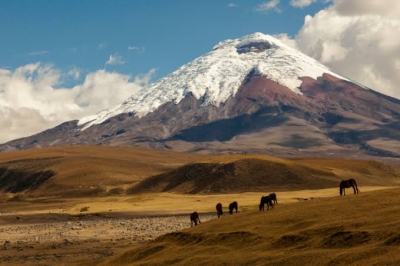
To answer this, we must go back millions of years and find out how the Andes were formed. The Andes Mountain Range was formed when the Nazca Oceanic plate was subducted or forced under the South American plate.
A subduction zone occurs when a heavier and denser tectonic plate (such as an oceanic plate), goes under a lighter, less denser plate (such as a continental plate). Over millennia, this subduction-uplift process caused the Earth to be pushed up and led to the formation of the Andes.
But that’s not the end of the story. The Andes continues to grow even today. In fact in the last 4 million years the Andes has grown by 2,500 m. This growth is the result of declamation, which means that when denser rocks detach from the underside of the crust, lighter crust rises up in sudden bursts. Keep in mind that for a mountain ‘a sudden burst’ means several million years.
But this is only half the story; while geological forces shift the Andes from below, glaciers that formed during the last Ice Age, are also continuously carving and shaping its peaks and hollowing out its valleys.
This process is an on-going one, which is why we say that the Andes are still growing and constantly changing.
Picture Credit : Google




